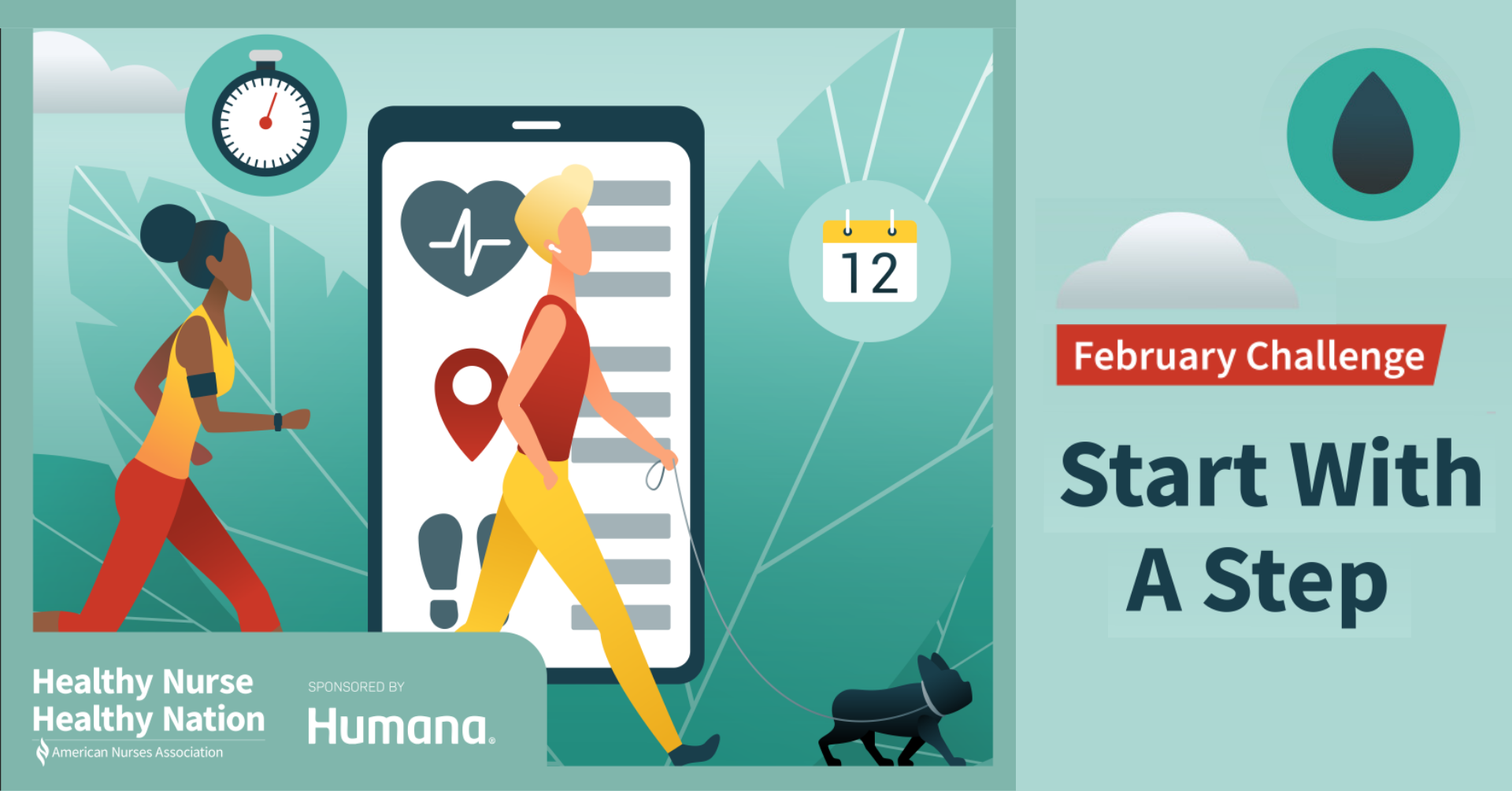Set a SMART Goal to track your progress - Start with a Step challenge, powered by Humana - Day 1 - Healthy Nurse, Nurse, Healthy Nation
Published
Day 1 - Set a SMART Goal
Welcome to Day 1 of the Start With a Step Challenge! We’re kicking things off by setting clear, actionable goals, aka SMART goals. Starting here will give you direction and help you track your progress.
What exactly is a SMART goal? It’s a goal that’s Specific, Measurable, Achievable, Relevant, and Time-bound. When you break down your walking goals using this framework, you're setting yourself up for success. It helps you stay focused, gives you something concrete to strive for, and boosts your motivation.
Why does this matter? Strategic goals will help you stick to your plans and reach positive outcomes. A SMART goal helps you create a plan that's both realistic and motivating, keeping you engaged throughout the challenge.
Your Action for Today
Use the following elements and examples below to develop your very own SMART goal for this challenge.
Remember, setting realistic goals will help you believe in your ability to achieve them, increasing your self-efficacy. This will make your walking journey more manageable and enjoyable.
Pro tip: If you're aiming for a step goal, break it down even further. You could set an incremental target like: “I’ll aim for 2,000 steps today, 2,500 steps tomorrow, and work my way up to 5,000 steps by the end of the challenge.”
What’s coming up: Make your walk more fun by changing up your route and exploring new places.
Join us on day 2!

Welcome to Day 1 of the Start With a Step Challenge! We’re kicking things off by setting clear, actionable goals, aka SMART goals. Starting here will give you direction and help you track your progress.
What exactly is a SMART goal? It’s a goal that’s Specific, Measurable, Achievable, Relevant, and Time-bound. When you break down your walking goals using this framework, you're setting yourself up for success. It helps you stay focused, gives you something concrete to strive for, and boosts your motivation.
Why does this matter? Strategic goals will help you stick to your plans and reach positive outcomes. A SMART goal helps you create a plan that's both realistic and motivating, keeping you engaged throughout the challenge.
Your Action for Today
Use the following elements and examples below to develop your very own SMART goal for this challenge.
| Element | What it Means | Example |
| Specific | Clearly define what you want to accomplish. | I want to walk every day for at least 15 minutes. |
| Measurable | How will you track your progress? | I will track my steps with a fitness tracker or app. |
| Achievable | Make sure it's within your ability. | Walking 15 minutes a day is manageable with my current schedule. |
| Relevant | How does it tie into your health or fitness goals? | Walking more aligns with my goal to improve cardiovascular health. |
| Time-bound | Set a deadline or timeframe to accomplish your goal. | I’ll complete this goal for 10 days during the challenge. |
Remember, setting realistic goals will help you believe in your ability to achieve them, increasing your self-efficacy. This will make your walking journey more manageable and enjoyable.
Pro tip: If you're aiming for a step goal, break it down even further. You could set an incremental target like: “I’ll aim for 2,000 steps today, 2,500 steps tomorrow, and work my way up to 5,000 steps by the end of the challenge.”
What’s coming up: Make your walk more fun by changing up your route and exploring new places.
Join us on day 2!

Blog Challenge Tips
02/11/2025 5:09pm CST



Post a Comment or Question